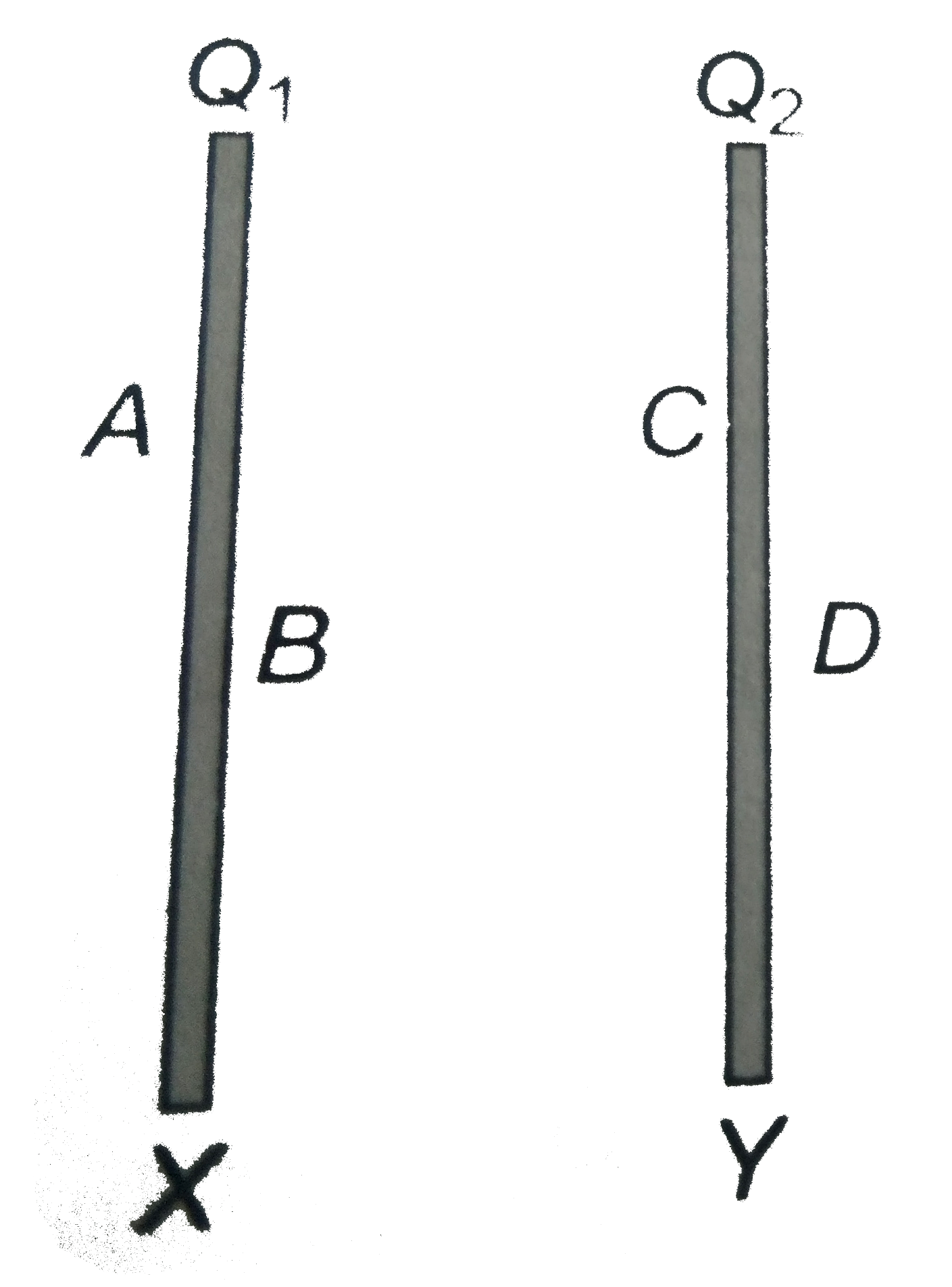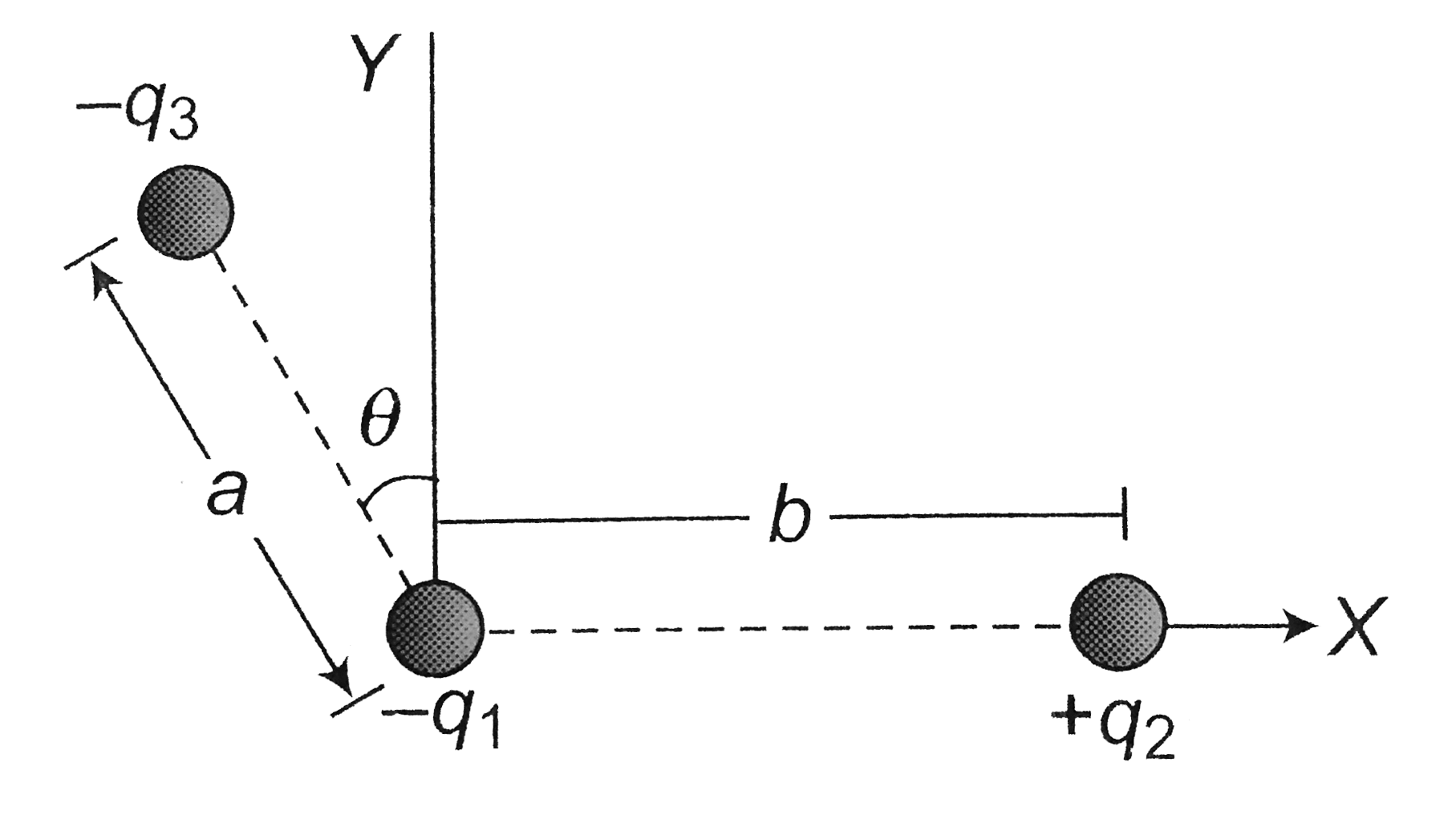Three charges are placed as shown in the figure. The x - component of the force on is proportional to
 Solution in Telugu
Solution in Telugu
The correct Answer is:B
Step by step video, text & image solution for Three charges -q_(1), + q_(2) and -q_(3) are placed as shown in the figure. The x - component of the force on q_(1) is proportional to by Physics experts to help you in doubts & scoring excellent marks in Class 12 exams.
Updated on:21/07/2023Topper's Solved these Questions
- APPENDICES ( REVISION EXERCISE )BOOK - AAKASH SERIESCHAPTER - APPENDICES ( REVISION EXERCISE )EXERCISE - REVISION EXERCISE (ELECTRIC POTENTIAL & CAPACITANCE )
143 Videos
- APPENDICES ( REVISION EXERCISE )BOOK - AAKASH SERIESCHAPTER - APPENDICES ( REVISION EXERCISE )EXERCISE - REVISION EXERCISE (CUTTENT ELECTRICITY )
108 Videos
- ALTERNATING CURRENTBOOK - AAKASH SERIESCHAPTER - ALTERNATING CURRENTEXERCISE - EXERCISE - III
39 Videos
- APPENDICES (REVISION EXERCISE)BOOK - AAKASH SERIESCHAPTER - APPENDICES (REVISION EXERCISE)EXERCISE - LAW OF MOTION
91 Videos
Similar Questions
At y=1 cm, y = 3 cm y = 9 cm, y = 27 cm ... and so on, an infinite number of charges equal to 5C are placed. At x = 1 cm, x=2 cm, x=4 cm, X = 8 cm.... and so on, an infinite number of charges equal to -5C are placed. Find the electric potential at origin in volts.
(K=14πε0)
View SolutionIf α-particle (2He4) is revolving in a circular orbit of radius 3.14 A with speed of 8×106ms. Then the equivalent current is
View SolutionThe equation of an alternating emf is volt. Find V=120sin(100πt)cos(100πt) Volt the peak value of its emf and its frequency.
View SolutionA body of mass 1 kg is moving with velocity 30ms−1 due north. It is acted on by a force of 10 N due west for 4 seconds. Find the velocity of the body after the force ceases to act.
View SolutionThree charged paricles are placed on a straight line as shown in fig. q_(1) and q_(2) are fixed but q_(3) can be moved. Under the action of the forces from q_(1),q_(2) and q_(3) is in equilbrium. What is the relation between q_(1) and q_(2) .
View SolutionAssertion: Two charges q_(1) and q_(2) are placed at separation r . Then magnitude of the force on each charge is F . Reason: Now a third charge q_(3) is placed near q_(1) and q_(2) . Then force on q_(1) and q_(2) remains F .
View SolutionThree charges -q_(1), +q_(2) and -q_(3) are placed as shown in the figure. The x -component of the force on -q_(1) is proportional to
View SolutionWhen two charges q1andq2 are kept at some distance apart, force acting between these charges is F. If a third change q3 is placed quite close to q3 is placed quite close to q2 what will happen to the force between q1andq2 ?
View SolutionTwo large , parallel conducting plates X and Y , kept close to each other , are given Q1 and Q2(Q1>Q2). The four surfaces of the plates are A,B,C and D , as shown

(i) The charge on A is 12(Q1+Q2)
(ii) The charge on B is 12(Q1−Q2)
(iii) The charge on C is 12(Q2−Q1)
(iv) The charge on D is 12(Q1+Q2)
View SolutionAssertion: Four point charges q1,q2,q3 and q4 are as shown in Fig,The flux over the shown Gaussians surface depends only on charges q1 and q2
Reason:Electric field at all points on Gaussians surface depends on any charges q1 and q2

View SolutionA charge q1 exerts some force on a second charge q2 If a third charge q3 is brought near q2, then the force exterted by q1 on q2
View SolutionThree charges −q1,+q2 and −q3 are placed as shown in the figure. The x-component of the force on −q1 is proportional to

View SolutionThree charges (-q1),(+q_(2)) And (-q_(3)) Are placed as shown in Figure I.1. Charge (-q_(1)) The x-component of the force is proportional to
View Solutionएक लघु द्विध्रुव के अक्ष पर स्थित एक बिंदु आवेश पर विद्युत बल F है। यदि दूरी को दोगुना करने के लिए आवेश को अक्ष के अनुदिश स्थानांतरित किया जाता है, तो विद्युत बल का अभिनय होगा:
View SolutionElectric force between two point charges q_(1) and q_(2) at rest is F. Now is a charge -q_(1) is placed next to q_(1) . What will be the (a) force on q_(2) due to q_(1) (b) total force on q_(2) ?
View Solutionएक बिन्दु आवेश q1, एक अन्य बिन्दु आवेश q2 पर F बल आरोपित करता है q3 को q2 के समीप में रख दिया जाये तो q1 के कारण q2 पर बल का मान होगा -
View Solution
